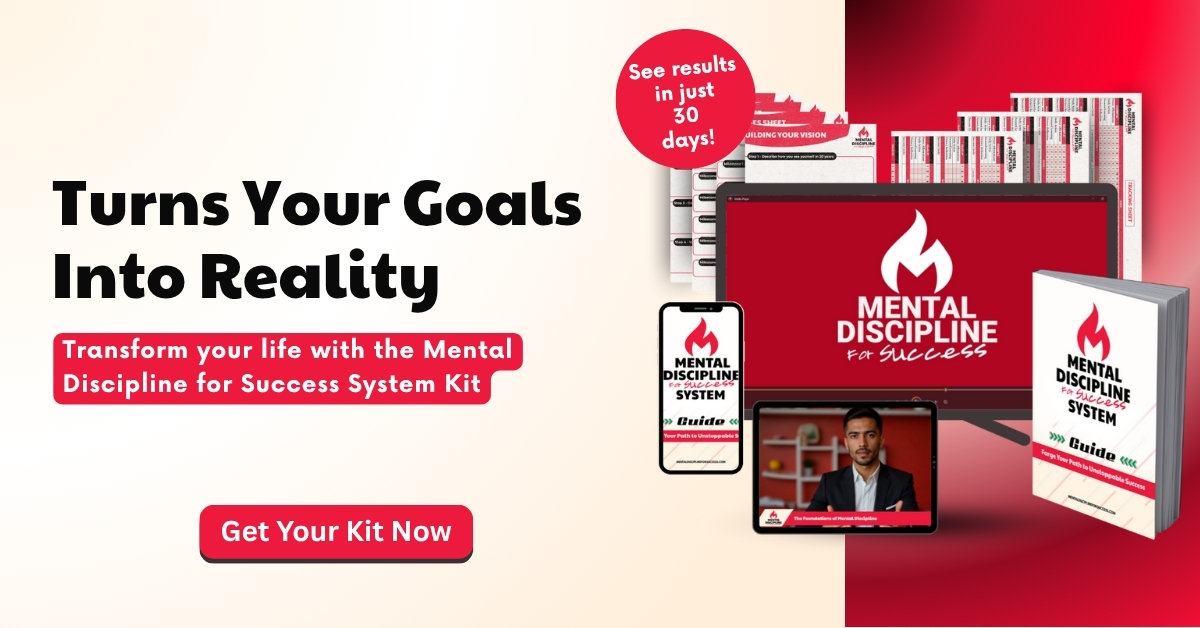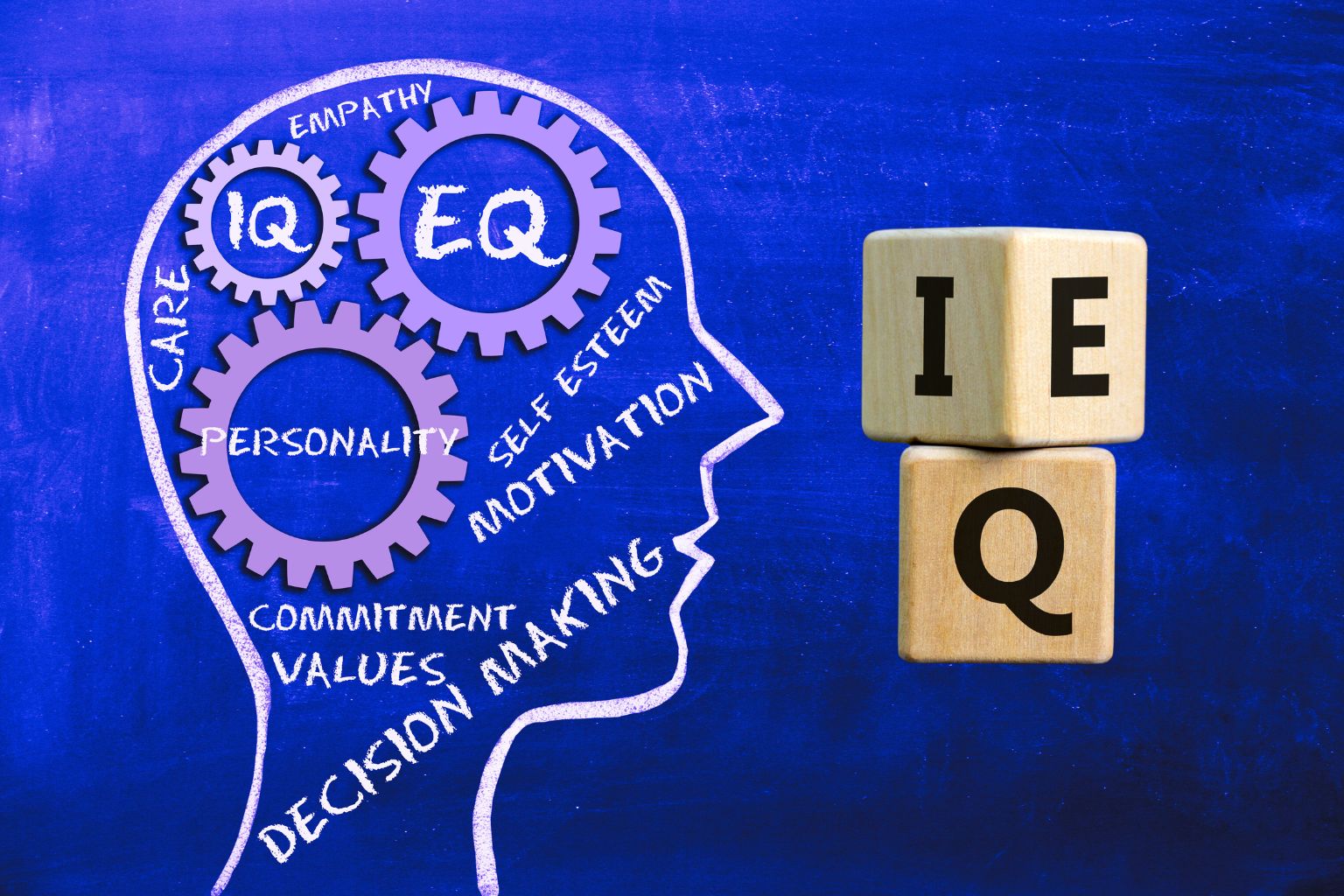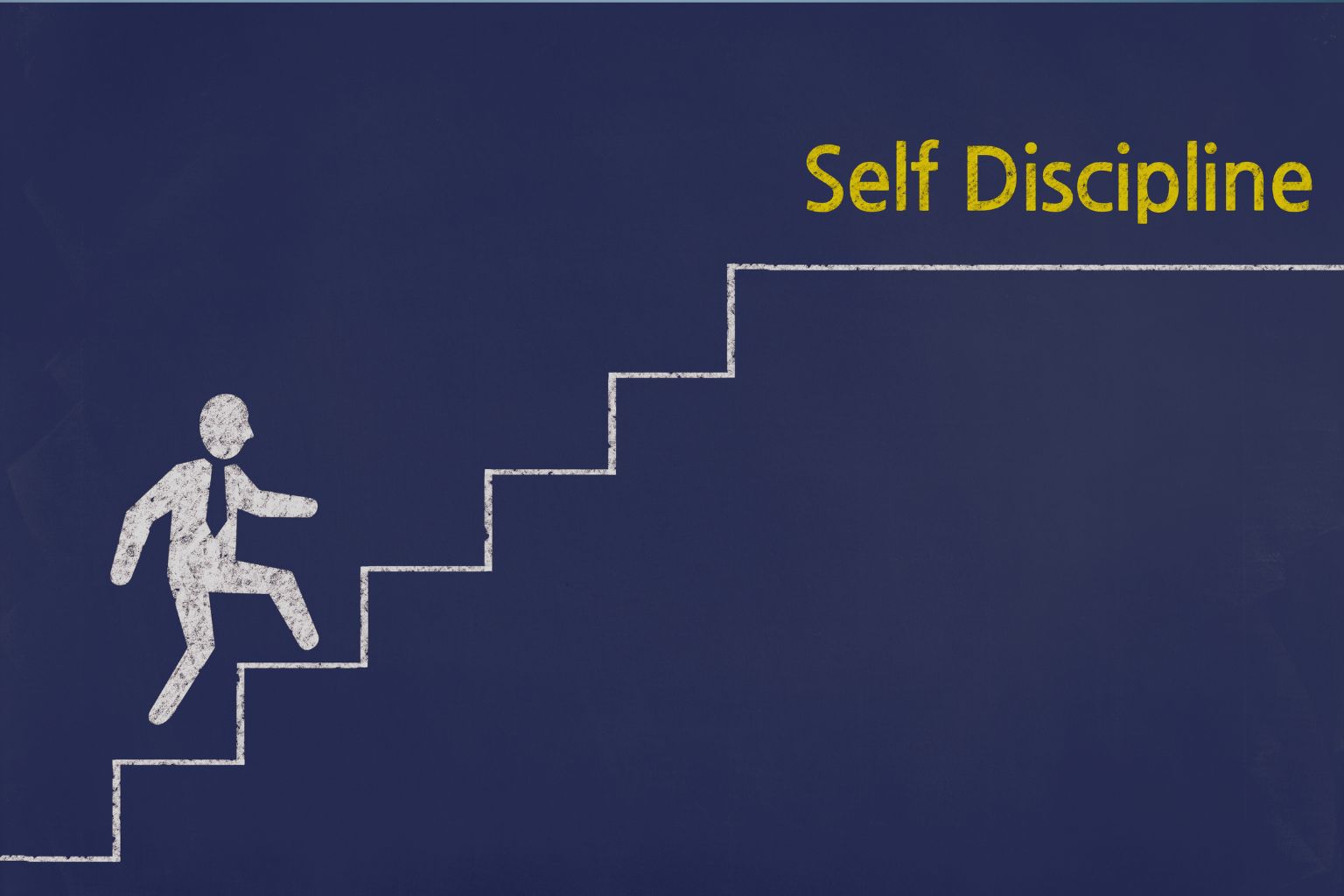A victim mindset is a pattern of thinking where you see yourself as powerless, blaming external circumstances—people, events, systems, luck or even God.
How to Overcome a victim mindset and Self-Limiting Beliefs?
Ever feel like life’s dealt you a losing hand, like no matter how hard you try, you’re stuck in a spiral of blame, helplessness, and self-doubt? That’s the victim mindset—a silent thief that steals your power, dims your dreams, and keeps you chained to “I can’t.”
But what if you could shatter those chains? Imagine waking up with a fire in your soul, fueled by mental discipline for success, ready to rewrite your story and claim the life you deserve.
This isn’t a fantasy—it’s a choice.
In this post, we’ll dive deep into proven strategies to break free from the victim mindset, crush self-limiting beliefs, and build unshakable resilience. Ready to take back control and soar? Let’s unlock your path to personal growth and empowerment!
What Is a Victim Mindset?
A victim mindset is a pattern of thinking where you see yourself as powerless, blaming external circumstances—people, events, or systems—forces your struggles. Rooted in cognitive psychology, it traps you in cycles of helplessness, negativity, and self-sabotage, blocking personal growth.
Overcoming it requires mental discipline for success, blending self-awareness, responsibility, and proactive habits. By recognizing negative thought patterns, challenging limiting beliefs, and embracing growth, you can shift from victimhood to empowerment.
Some common signs include:
- Constantly blaming others for your situation
- Believing you’re unlucky or “cursed”
- Feeling powerless to change your life
- Repeating thoughts like “It’s just how I am” or “I can’t help it”
- Waiting for someone to come save you
The victim mindset convinces you that you’re stuck—and it makes that belief feel true.
How the Victim Mindset Blocks Success
If you’re stuck in the victim mindset, it’s like driving with the parking brake on. No matter how hard you press the gas, you won’t get far.
Here’s how it sabotages your progress:
1. It Weakens Your Identity
You start seeing yourself as someone who “can’t.” That story shapes every action—or inaction—you take.
2. It Avoids Responsibility
When you blame everything outside you, you give away your power. You avoid the very responsibility that would set you free.
3. It Feeds Fear and Inaction
Fear thrives in a victim mindset. You fear rejection, failure, or even success—and do nothing to challenge that fear.
4. It Creates Learned Helplessness
Over time, you train yourself to expect failure… so you stop trying. That’s the real danger.
But there’s a way out.
And it starts with mental discipline for success—the mindset that says, “I can choose differently, starting today.”

The steps below, backed by science and real-world examples, will guide you to defeat the victim mindset and thrive.
1. Recognize and Acknowledge Your Victim Mindset
The first step to breaking free from a victim mindset is admitting it exists. When thoughts like “nothing ever works out” or “it’s always their fault” dominate, you’re caught in victimhood. A 2019 Personality and Social Psychology Bulletin study found self-awareness cuts self-blame by 25%, opening the door to change.
This isn’t about guilt—it’s about spotting patterns like blaming others or feeling helpless during stress (e.g., after a work conflict). Journaling these moments helps you identify triggers and take control.
- Pro Tip: Write down three thoughts daily that feel like victimhood (e.g., “My team never listens”). Check if they’re fact-based or assumptions.
- Try This: For one week, pause when you feel helpless and ask, “Am I blaming someone else? What can I do instead?”
2. Challenge Negative Thoughts and Beliefs
Negative thoughts are the engine of a victim mindset, feeding lies like “I’m not good enough” or “I’ll never succeed.” Challenging them means dissecting their roots, testing their truth, and replacing them with empowering beliefs.
Cognitive Behavioral Therapy (CBT), per a 2020 Journal of Clinical Psychology study, boosts self-efficacy by 30% through thought reframing. This is a core skill for shifting from victimhood to resilience.
Why Negative Thoughts Persist
Negative thoughts arise from cognitive distortions—flawed mental shortcuts that distort reality. In a victim mindset, these include:
- All-or-Nothing Thinking: “If I fail once, I’m a total failure,” ignoring partial wins like learning from errors.
- Overgeneralization: “I didn’t get this job, so I’ll never get hired,” assuming one event defines all outcomes.
- Catastrophizing: “If I speak up, I’ll be humiliated,” exaggerating risks and freezing action.
- Externalizing Blame: “My failure is my boss’s fault,” dodging personal accountability.
These distortions often stem from early experiences (e.g., criticism in childhood), reinforced by stress or rejection. A 2021 Psychological Review study notes that repeated self-doubt can make victimhood a default lens. Social pressures, like unrealistic expectations, can amplify this, making thoughts feel like facts. Breaking free requires spotting these patterns and rewiring your mind.
How to Challenge Them
- Spot the Thought: Write down the exact thought (e.g., “I’m too old to start over”). Identify the distortion—is it overgeneralization or catastrophizing?
- Test Its Truth: Ask, “Is this always true? What’s the evidence?” For “I always fail,” list successes, like completing a task or supporting a friend.
- Reframe It: Swap the thought for a balanced one, like “Age brings wisdom, and many succeed later.”
- Practice Daily: A 2018 Behavior Research and Therapy study found daily CBT exercises cut negative thoughts by 40% in 12 weeks. Use a journal or app like Moodfit.
For example, J.K. Rowling faced 12 publisher rejections for Harry Potter. In her June 5, 2008, Harvard Commencement Address, she shared how thoughts like “I’m a failure” after divorce and poverty fueled a victim mindset. She challenged these by listing her strengths—storytelling and grit—and kept submitting manuscripts, leading to global success. You can reframe your thoughts the same way to build confidence.
- Pro Tip: Keep a “thought log” with columns: Negative Thought, Distortion, Evidence Against, New Thought. Update it daily.
- Try This: When you think, “I can’t do this,” list three counterpoints and take one action to disprove it.
Embrace a Growth Mindset
A growth mindset—believing you can grow through effort—is key to challenging negative thoughts. Carol Dweck’s 2016 Mindset research shows it increases perseverance by 35%. Instead of “I’m stuck,” think, “I can learn from this.” View challenges as chances to improve, like seeing a work mistake as a skill-building moment. This mindset weakens the victim mindset by focusing on potential over limitations.
3. Practice Self-Reflection and Self-Awareness
Self-reflection and self-awareness are vital for escaping a victim mindset. By examining your thoughts, emotions, and triggers, you uncover what fuels victimhood—past hurts, fears, or false beliefs.
A 2020 Journal of Personality study found reflection boosts emotional intelligence by 28%, helping you catch negative patterns early. For example, notice when stress (e.g., a deadline) sparks thoughts like “I’m not enough.” Journaling, meditation, or therapy can reveal these triggers and guide you to respond with empowerment.
- Pro Tip: Journal nightly for 10 minutes, answering: “What triggered my victim mindset today? How did I react?”
- Try This: Meditate for five minutes daily, focusing on your breath, and note any self-limiting thoughts.
4. Take Responsibility
Taking responsibility for your emotions and actions breaks the victim mindset by proving you’re in control. A 2019 Psychological Science study found owning your choices boosts resilience by 22%. Instead of “My colleague ruined my project,” try, “I could’ve communicated better—what can I improve?” This isn’t self-blame but empowerment—choosing how you respond. Practice assertive communication (e.g., “I need clearer feedback”) and set boundaries to reinforce your agency.
- Pro Tip: Use assertive phrases like, “I’d like to discuss this calmly,” to own your needs.
- Try This: Identify one situation where you blamed others and list one action to address it.
5. Build Mental Discipline for Success
Building mental discipline for success is a powerful step to conquer the victim mindset. Mental discipline means training your mind to stay focused, resilient, and intentional, resisting the pull of helplessness. A 2021 Journal of Positive Psychology study found disciplined habits increase goal achievement by 33%. By cultivating focus and consistency, you replace victimhood with purpose, proving you can shape your future.
How to Build Mental Discipline
- Visualize Success: Spend 5 minutes daily picturing your goals (e.g., a promotion). A 2019 Neuropsychologia study shows visualization boosts motivation by 20%.
- Habit Stacking: Pair a new habit (e.g., journaling) with an existing one (e.g., morning coffee) to build consistency, per a 2020 Behavior Research and Therapy study.
- Focus on One Task: Use the Pomodoro technique (25-minute work blocks) to avoid distractions, enhancing discipline by 25%, per a 2018 Journal of Productivity.
- Self-Accountability: Track progress with apps like Todoist to stay committed, reinforcing your control over outcomes.
Mental discipline counters the victim mindset by shifting your focus from external obstacles to internal power. For instance, instead of thinking, “I can’t because of my past,” you’ll train yourself to think, “I’m building my future now.” This step aligns with your Mental Discipline for Success mission, equipping you to thrive.
- Pro Tip: Start with one 5-minute discipline habit, like visualizing a goal, and build from there.
- Try This: For one week, use the Pomodoro technique for one task daily and note your focus gains.
6. Set Goals and Take Action
Clear, achievable goals give you a roadmap out of the victim mindset. A 2018 Journal of Applied Psychology study found goal-setting boosts motivation by 30%. Start small—read 10 pages daily or practice a skill for 15 minutes—then scale up. Action dispels helplessness, proving you’re not a victim. Use SMART goals (Specific, Measurable, Achievable, Relevant, Time-bound) and take one step daily to build momentum.
- Pro Tip: Break a big goal into three micro-goals (e.g., for “run a 5K,” start with “walk 10 minutes”).
- Try This: Set one small goal this week and act on it daily, tracking progress.
7. Learn from Setbacks and Failures
Setbacks don’t define you—they’re growth opportunities. A 2020 Journal of Behavioral Decision Making study found analyzing failures boosts future success by 25%. Instead of “I failed, I’m hopeless,” ask, “What can I improve?” After a setback, journal what happened, what you learned, and one action to take. This builds resilience and weakens victimhood.
- Pro Tip: Post-setback, list three lessons and one action (e.g., “I’ll prepare more for presentations”).
- Try This: Reflect on one recent setback and write one lesson to guide your next step.
8. Surround Yourself with Positive Influences
Your environment shapes your mindset. A 2019 Social Psychological and Personality Science study found positive social circles boost goal success by 28%. Seek people who inspire and challenge you, like mentors or growth-focused friends, and limit time with those who reinforce victimhood. Join communities like Mental Discipline for Success, attend workshops, or read empowering books to stay motivated.
- Pro Tip: Schedule a chat with one positive person to share goals and insights.
- Try This: Join a growth-focused group (e.g., online forum) this week and engage with one post.
9. Replace Self-Defeating Behaviors
Self-defeating behaviors—like procrastination or negative self-talk—lock in a victim mindset. Replacing them with empowering habits is crucial. A 2021 Behavior Therapy study found habit replacement cuts self-sabotage by 35%. If you procrastinate, try the “2-minute rule”: start a task for just two minutes to gain momentum. Swap self-criticism for affirmations like “I’m learning and growing.”
Dwayne “The Rock” Johnson, cut from the Canadian Football League, battled self-pity. In his 2018 Oprah’s Master Class interview, he shared replacing negative self-talk with daily gratitude, like noting small wins, which fueled his Hollywood career. Identify one self-defeating habit (e.g., scrolling endlessly) and swap it for a positive one (e.g., reading).
- Pro Tip: Use a habit tracker app like Habitica to replace one bad habit with a good one.
- Try This: Pick one self-defeating behavior and replace it with a 2-minute positive action daily.
FAQs About Breaking Free from a Victim Mindset
A victim mindset traps you in helplessness, blaming external factors for struggles. A 2019 Journal of Personality study found it cuts motivation by 30%, stunting growth. Building mental discipline for success helps you take control and pursue goals confidently.
Shifting a victim mindset varies, but small changes can emerge in 4–8 weeks. A 2020 Behavior Research and Therapy study found CBT reduces negative thoughts in 12 weeks. Consistent steps, like those here, speed up your self-improvement.
Slipping is normal—self-awareness helps. Research shows micro-habits, like 5-minute journaling, boost adherence by 40%. Pause, reflect, and reframe thoughts. Communities like Mental Discipline for Success offer support to stay on track.
Yes! Breaking a victim mindset enhances emotional intelligence, strengthening bonds. A 2021 Journal of Social Psychology study found responsibility improves trust by 25%. Owning reactions fosters assertive, conflict-free connections.
Pick one step, like recognizing victim thoughts or setting a goal. A 2018 Journal of Applied Psychology study found small actions boost momentum by 20%. Experiment with reflection or reframing to kickstart your self-improvement.
The victim mindset often develops from childhood experiences, repeated setbacks, or learned behaviors from others who modeled helplessness. It’s a protective response—but one that keeps you stuck if left unchecked.
You can eliminate its control over your life. It may still show up occasionally, but with awareness and discipline, you’ll stop acting from it.
No. The victim mindset is a mental habit, not a diagnosis. Depression or trauma may contribute to it, but addressing those requires professional support. You can work on both simultaneously.
Conclusion
You’re not a victim—you’re a powerhouse ready to break free from the victim mindset. By recognizing negative patterns, challenging limiting beliefs, and building mental discipline for success, you’re forging a path to resilience and growth. Start now: reflect on one thought, set one goal, take one step.
Every action shatters self-doubt and builds your future. Join the Mental Discipline for Success community at mentaldisciplineforsuccess.com/community to connect with others on this journey. Your unstoppable life awaits—go seize it!

















Share it!